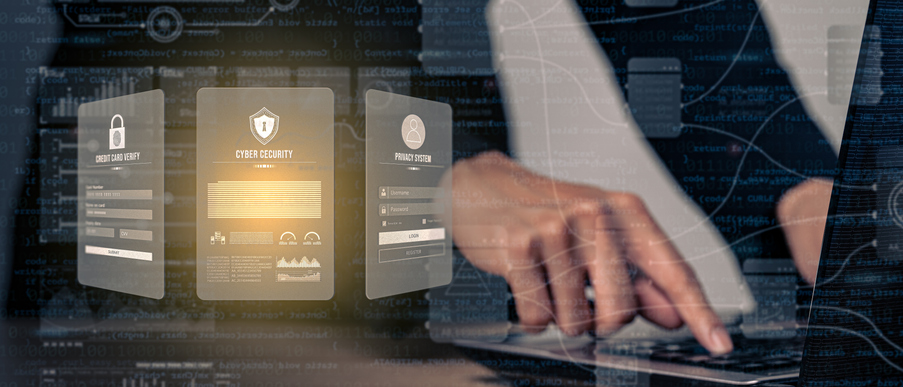3 min read
3 min read
Enhancing Network Security: Implementing Authorization Solutions and Personnel Policies
 The Amazing Team at Force One
:
Apr 9, 2024 2:23:05 PM
The Amazing Team at Force One
:
Apr 9, 2024 2:23:05 PM
Network security is more critical today than ever before. With cyber threats on the rise, businesses need to ensure that their data and resources are protected. A significant part of this protection comes down to controlling access through authorization solutions and establishing strong personnel policies. This blog will break down these concepts into actionable strategies and offer tips that you can apply to strengthen your network security.
Understanding Authorization in Network Security
Implement Identity and Account Types
Different roles within an organization require different levels of access. To safeguard the organizational assets, it is crucial to manage who has access to what information. Here’s how you can implement this:
- Define Clear Roles: Assign specific roles to your team members based on their job requirements. This clarity will help in assigning the most appropriate level of access to each team member, ensuring that they have the tools and information needed to perform their jobs efficiently without exposing unnecessary data
- Create Account Types: Each role should have an account type that matches its access needs, ensuring that employees only have access to the information necessary for their jobs. For instance, an account type for IT staff will likely require broader access to network settings and security configurations than an account type for a sales team member. This differentiation helps in minimizing potential security risks by adhering to the principle of least privilege—providing no more access to information than necessary for individuals to fulfill their roles.
Implement Account Policies
Account policies are the rules that govern how accounts are managed and can include password complexity requirements, session timeouts, and account lockout policies.
- Set Strong Password Policies: Require complex passwords that are changed regularly to protect against unauthorized access. Like: passwords to be a mix of upper and lower case letters, numbers, and special characters, and mandate that these passwords be changed on a regular schedule.
- Regular Audits: Conduct regular audits of account usage to ensure that access levels are appropriate and that no inactive accounts pose a security risk. If left unchecked, could become potential entry points for attackers.
Implement Authorization Solutions
Authorization solutions manage how access is granted and can include permissions settings, access control lists (ACLs), and role-based access control (RBAC) systems.
- Use Role-Based Access Control (RBAC): RBAC systems allow you to assign permissions to roles rather than individuals, making it easier to manage access rights.
- Regularly Update Permissions: As roles change, update permissions to ensure that access levels remain appropriate. This might involve removing access for certain roles or adding new resources as the company grows
The Importance of Personnel Policies
Personnel policies play a crucial role in network security. These policies outline the expected behaviors and responsibilities of employees when it comes to interacting with the organization’s network and resources.
- Security Awareness Training: Educate your team about the importance of network security and their role in protecting the organization’s assets. These trainings should be mandatory for the new hires and cover all aspects from basic password hygiene to recognizing and responding to phishing attempts.
- Incident Response Plans: Have clear policies in place for responding to security incidents, including who to contact and what steps to take. This includes: defining clear procedures and clearly defining the roles and responsibilities of each team member. Regular cybersecurity drills for just like fire drills and a foolproof communication strategy in case of any security breach also can help manage the situation more effectively.
Who has done it before?
JPMorgan Chase & Co., one of the largest banking institutions in the United States, has long been at the forefront of incorporating advanced cybersecurity measures to protect its extensive digital assets and sensitive customer data. One of the key strategies they've employed is Role-Based Access Control (RBAC).
The bank implemented RBAC to ensure that access to its digital resources was strictly governed by the role an employee played within the organization. This meant that employees were only granted access to the information and systems necessary for their job functions, significantly minimizing the risk of internal data breaches.
By implementing RBAC, JPMorgan Chase created a more secure and efficient IT environment and could significantly reduce the potential attack surface for hackers and prevent unauthorized access to sensitive information, thereby enhancing overall network security.
Pro Tips:
Strengthening your network security is an ongoing process that requires attention to both technological solutions and human factors. Here are some key takeaways:
- Implement Strong Authorization Solutions: Use RBAC and regularly update permissions to ensure appropriate access levels.
- Establish Solid Personnel Policies: Conduct regular security training and have an incident response plan in place.
- Regular Audits: Keep an eye on account usage and access rights to prevent security lapses.
Start with a comprehensive audit of your current access rights and roles. Identify any gaps or unnecessary access rights and adjust accordingly. Incorporating regular security training sessions for all employees can also make a significant difference in your organization’s overall security posture.
Also Read: Mastering Network Security: A Step-by-Step Guide to Port Scanning Techniques
If you're interested in more job tips and ways to advance your career in the cybersecurity field, check out more details at ForceOne Cybersecurity. Together, we can build a safer digital future.
FAQs
- What’s the difference between authentication and authorization?
Authentication verifies a user's identity, while authorization determines what resources a user can access.
- Why are personnel policies important for network security?
They ensure that employees understand their role in maintaining security and know how to respond to potential threats. - How often should access permissions be reviewed?
At least annually, or whenever there are significant changes in roles or the organization’s structure. - What is RBAC?
Role-Based Access Control is a method of restricting system access to authorized users based on their roles within an organization. - Can strong password policies really make a difference?
Yes, complex and regularly changed passwords can significantly reduce the risk of unauthorized access.

5 min read
Securing Your Network: A Guide to Implementing Secure Network Protocols
In the tapestry of today’s digital ecosystem, the threads of network security are woven with both diligence and innovation. Remember the last time...

4 min read
Maximizing Network Security: Exploring Firewalls, Proxy Servers, and SIEM
Hello Cyber Enthusiasts! In today's online world, keeping our digital spaces safe is like locking our doors at night. It’s essential. Whether you’re...



